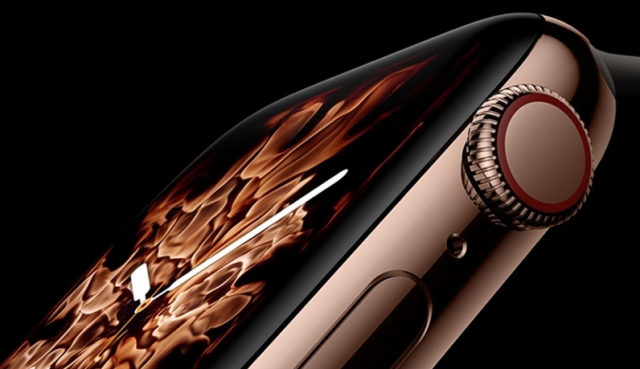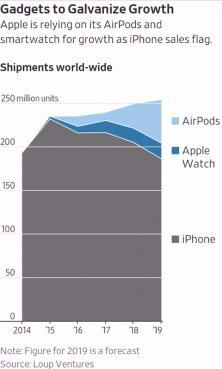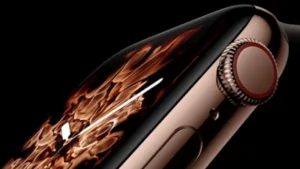In case you missed it, Apple had its annual fall confab at the Steve Jobs Theater this past week, and among other things is looking to deliver a watch that actually tells you the time no matter how or when you look at it. Yes, it’s a “normal” thing to have a consumer electronic device “wake-up” from a sleep mode, thus preserving precious battery minutes, but this is after-all a watch, and a quick glance in a resting / stationary state should still deliver on that promise of time telling. Well, now it does!

To get there, Apple updated their generation 4 watch with an always-on low power cycle mode that uses its award winning LTPO (oxide) backplane. This is a low-temperature polycrystalline oxide LTPO that combines both LTPS TFTs and Oxide TFTs (IGZO, indium gallium zinc oxide.)
 Apple watch series 5 with always-on retina display, Source: Apple
Apple watch series 5 with always-on retina display, Source: Apple
It can work with both OLED and LCD displays and was introduced in 2019, and that series 4 display took the Display of the Year award at SID Display Week in May of this year. Apple gave the series 4 display a 30% display area boost over the previous watch and the SID committee said it was also impressed with the LTPO technology introduction that vastly improved power efficiency (maintained its trademark all day battery life.)
Like other series watches, the new “series 5” offers two sizes, a smaller (40mm) and larger (44mm) size with 1000 cd/m² AMOLED display and resolutions of 324 x 394 and 368 x 448, respectively. These are dubbed the “always-on retina displays.” They also sport an S5 dual-core chipset, 32GB of storage, GPS, optional cellular connectivity, plus an optical and electrical heart sensor that emphasizes the health side of the device.
Meanwhile on the iPhone side of the house, word on the street is that iPhone revenue will be flat to up slightly over the next year after being down 15% in the last three quarters. With the watch, and all the other announcements on Wednesday-last, Apple is looking to juice sales with any non-iPhone device, and service, as their star product that still accounts for more than half of Apple’s revenue is flat as a Nebraska landscape, with iPhone sales on the slide south.

Along those lines, at the Wednesday September 11th. event, the company introduced a host of new services, (including $4.99 pricing on a ‘Netflix killer’ subscription service it is giving away for one year with any new device purchase.) Apple is betting it can produce long-series and film content as well or better than those other guys (Netflix, HBO etc.) and will charge $5.00 per month to see it in the long run.
iPhone revenue is down about 15% over the last three quarters, according to Loup Ventures. Word on the street is that the new camera technology and other improvements will help lift things a bit in the space, but there was nothing significant to move into growth territory as in years gone bye. This is partly due to a roughly 7% price drop in iPhone 11 which is about $50 less than the 10XR. Price of the pro models XS and Max, are consistent with previous generation flagship models.
Entry-level pricing for the highest volume iPhone 11 instead (that replaces the XR) – is $50 lower, and another clear indicator that Apple needs to bring back its consumers to upgrade. The iPhone 11 Pro and 11 Pro Max remains the same as the XS and XS Max at $999 and $1,099, starting prices respectively.
So, at Apple, focus is on the watch and other devices (iPad etc.) as the significant shift to non-iPhone devices and services continues. The company faces the inevitable, as maturity hits the largest device seller category in the history of the company, the iPhone that brings the platform that changed everything to the palm of our hand. – Stephen Sechrist
Strategy Analytics: Apple Watch Captures Half of 18 Million Global Smartwatch Shipments in Q4 2018
Patent Details New OLED Screen Technology for Apple Watch
Apple May Introduce LTPO TFT Backplanes to Prolong Battery Life
AMOLED Sales to Reach USD 32.2 Billion in 2019, up 13.8% From 2018

